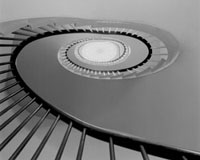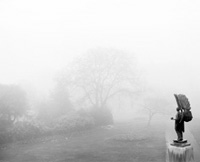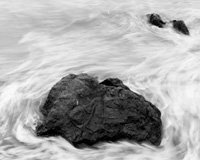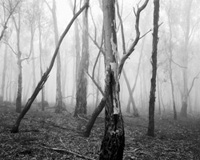The Blend
Michael Creedon Combines Film And Digital
Why do it? Why join the technologies,
film and digital, and go to work in the digital darkroom by scanning
your 4x5 negatives into your computer? |
|||
Michael is, in a way, also a blend: fine-art photographer, digital imaging consultant, and photography teacher. The fine-art photography came first: he was an assistant instructor at the Friends of Photography workshops in Carmel, California, when Ansel Adams and Paul Caponigro were on the premises. Michael became involved in digital imaging in the mid-1990s and now consults at colleges, photographic conventions, and private workshops. He is also on the faculty of the San Francisco Art Institute, where he teaches both film-based and digital imaging techniques. |
|||
What Michael does isn't alchemy; it's refinement and control. He starts with a level of excellence--images with texture, tonality, and subtlety. "And then I can clean up the 4x5 negatives, do some digital dodging and burning, adjust the curves and levels and then print them out on digital printers." Tools And Materials |
|||
His negatives are scanned on an Epson 1640 flat-bed scanner. For his color printing, he uses a number of Epson Stylus Pro printers at home and at the Art Institute, including the 9600, 9000, 7600, and the Stylus Color 3000 and 1160. For black and white, his prints are made with the 3000 and 1160. Lately, he's been using Hahnemuhle fine-art papers for his prints. |
|||
Michael encourages the blending
of the two technologies, but cautions that the digital darkroom is a different
game than the traditional processing environment. Perhaps the most important
key to success and satisfaction is consistency, and that means calibrating
all the elements so they perceive the same things. It's the digital
equivalent of the traditional darkroom's control of time, temperature,
paper, and chemicals. Scanner, monitor, and printer must be calibrated
so that what you see on the screen is what you get when you hold the print
in your hands. Like everything in photography, it's a discipline,
Michael says--but one well worth the effort. For More Information |
- Log in or register to post comments







































